Contrasts
April 26 – September 30, 2024
Spending time in the open space, in the sunlight, in the rain, under the clouds
helps people realise that sculpture is part of life.
Sam Hunter, In the Mountains of Japan
The gardens of Wawel Royal Castle are not exactly one of the currently popular parks of sculptures, but they fit perfectly into such a role during yearly summer shows, when the royal garden transforms into the exhibition space, in which contemporary art is presented in the open air, surrounded by nature. Works of art, nature, and history become one entity. The contrast between the new (sculpture) and the old (architecture) underlines the coherence of art and the complementary character of the two different types and roles they play. The garden becomes a laboratory in which terms and functions of a sculpture as well as an exhibition are subject to redefinition.
The work of art in the public space is something more than the object that is presented in a museum or a gallery. It combines the urban, spatial, and architectonic contexts, and in the case of the presentation of sculptures in the gardens of Wawel Royal Castle, also the historical one. The art that is displayed in the open air abolishes borders between the solid and its surroundings. The sculpture is experienced through all senses.
Such a way of displaying the art has a unique educational value, it allows for showing its interdisciplinarity, historical connections, and artistic inspirations. The art becomes engaged with the recipients, it comes into contact with them and encourages admiration. It can be a decoration, it can also initiate discussions and conversations, provoke thought on the topic of the past and its influence on the present.
The display of contemporary artists’ sculptures in the historic gardens of Wawel Royal Castle is an attempt to create an artistic forum, in which the past meets the present, where the work of art speaks with a new, great force, somehow leaving the museum behind and becoming part of the surrounding reality and space.
Works of Paweł Orłowski in the Wawel gardens become installations whose meaning originates from genius loci of the royal residence. Presenting the sculptures in this space is not an artistic intervention but a surprising synergy of old and contemporary art, a complementary story of art, history, and human fate. The presented works become an integral part of this space. Situating them on the view axes, between the castle walls and plants, keeping the proportions, reflecting light… All of this gives them form, shape, colour, and texture. The composition is based on the balance of nature and art. The recipient is at the same time the explorer, both in the physical sense (seeking particular sculptures in the garden) and in the metaphorical dimension (providing them with meanings, creating individual interpretations).
Paweł Orłowski was born in 1975. He graduated from the High School of Fine Arts in Rzeszów and obtained a diploma with distinction from the Department of Sculpture at the Academy of Fine Arts in Kraków, where he studied in the studio of Prof. Józef Sękowski. Additionally, he attended Universität der Künste in Berlin under the guidance of Karlheinz Biederbick. He has been interested in sculpture for nearly twenty-five years. He concentrates mainly on realisation of large-scale forms; for over a decade, he has been creating in a distinctive, geometrical style. His artistic oeuvre also includes small forms, in which he often touches issues related to human existence.
Spending time in the open space, in the sunlight, in the rain, under the clouds
helps people realise that sculpture is part of life.
Sam Hunter, In the Mountains of Japan
The gardens of Wawel Royal Castle are not exactly one of the currently popular parks of sculptures, but they fit perfectly into such a role during yearly summer shows, when the royal garden transforms into the exhibition space, in which contemporary art is presented in the open air, surrounded by nature. Works of art, nature, and history become one entity. The contrast between the new (sculpture) and the old (architecture) underlines the coherence of art and the complementary character of the two different types and roles they play. The garden becomes a laboratory in which terms and functions of a sculpture as well as an exhibition are subject to redefinition.
The work of art in the public space is something more than the object that is presented in a museum or a gallery. It combines the urban, spatial, and architectonic contexts, and in the case of the presentation of sculptures in the gardens of Wawel Royal Castle, also the historical one. The art that is displayed in the open air abolishes borders between the solid and its surroundings. The sculpture is experienced through all senses.
Such a way of displaying the art has a unique educational value, it allows for showing its interdisciplinarity, historical connections, and artistic inspirations. The art becomes engaged with the recipients, it comes into contact with them and encourages admiration. It can be a decoration, it can also initiate discussions and conversations, provoke thought on the topic of the past and its influence on the present.
The display of contemporary artists’ sculptures in the historic gardens of Wawel Royal Castle is an attempt to create an artistic forum, in which the past meets the present, where the work of art speaks with a new, great force, somehow leaving the museum behind and becoming part of the surrounding reality and space.
Works of Paweł Orłowski in the Wawel gardens become installations whose meaning originates from genius loci of the royal residence. Presenting the sculptures in this space is not an artistic intervention but a surprising synergy of old and contemporary art, a complementary story of art, history, and human fate. The presented works become an integral part of this space. Situating them on the view axes, between the castle walls and plants, keeping the proportions, reflecting light… All of this gives them form, shape, colour, and texture. The composition is based on the balance of nature and art. The recipient is at the same time the explorer, both in the physical sense (seeking particular sculptures in the garden) and in the metaphorical dimension (providing them with meanings, creating individual interpretations).
Paweł Orłowski was born in 1975. He graduated from the High School of Fine Arts in Rzeszów and obtained a diploma with distinction from the Department of Sculpture at the Academy of Fine Arts in Kraków, where he studied in the studio of Prof. Józef Sękowski. Additionally, he attended Universität der Künste in Berlin under the guidance of Karlheinz Biederbick. He has been interested in sculpture for nearly twenty-five years. He concentrates mainly on realisation of large-scale forms; for over a decade, he has been creating in a distinctive, geometrical style. His artistic oeuvre also includes small forms, in which he often touches issues related to human existence.
Castle and Exhibition Partners

.
Author of the photo of the sculpture on the poster: Kris Krzysztof Marchlak
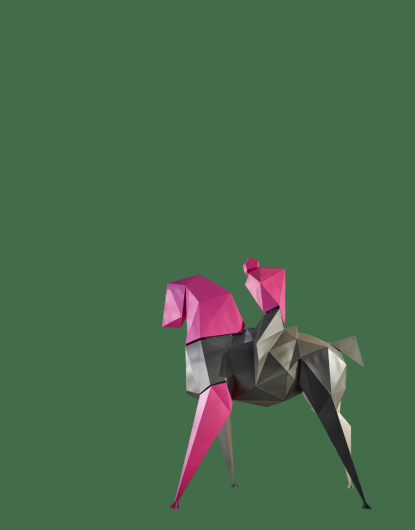
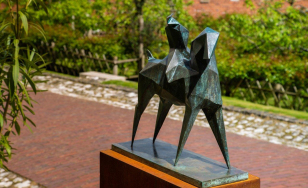
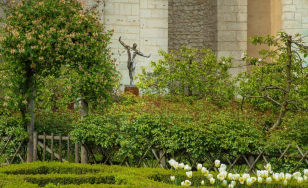
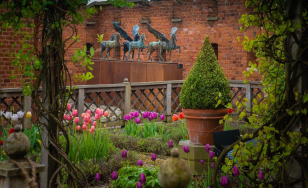
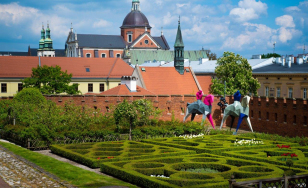
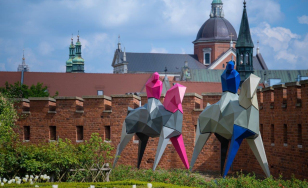
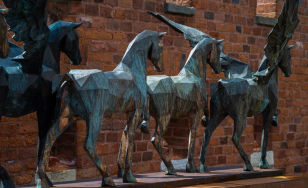
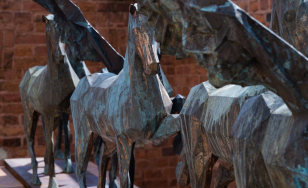
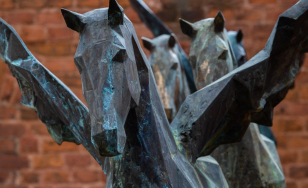
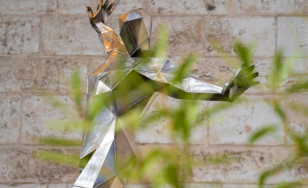
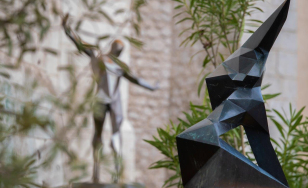
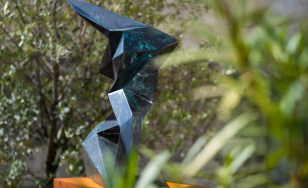
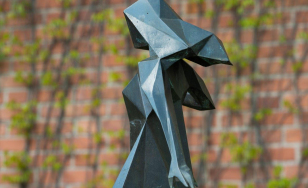
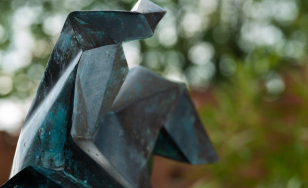
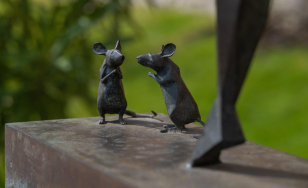
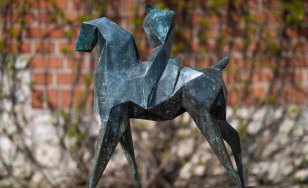

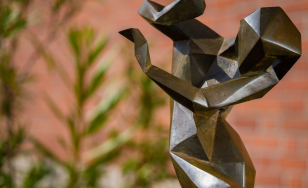
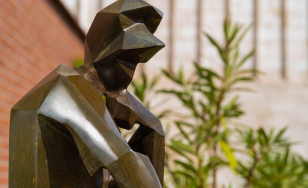
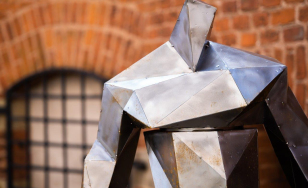
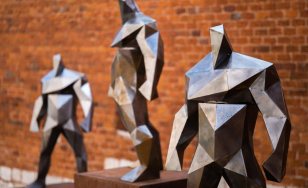


 Patron of the Wawel Royal Castle
Patron of the Wawel Royal Castle
 Strategic Partner of the Wawel Royal Castle
Strategic Partner of the Wawel Royal Castle
 Education Patron of the Wawel Royal Castle
Education Patron of the Wawel Royal Castle










